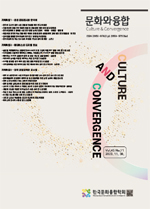본고의 목적은 1950년대 한국전쟁 당시 소설을 발표했던 두 부류의 여성작가의 소설을 살펴보고 여기서 발생하는 전쟁의 인식적 차이와 전시문학 장(場)의 성격을 논의하는 것이다. 이는 한국전쟁 당시 활동했던 방식이었던 종군, 비종군이라는 문학의 장(場)에서 세분화하여 논의하고자 한다. 종군 여성작가의 소설은 남한의 이념과 전통주의적 의식을 담겨있다. 그러나 전시에 종군하지 않았던 여성작가의 소설에는 전쟁 자체에서 발생한 공포와 비극에 주목하고 있다. 즉, 전시에 작품을 발표했던 여성 작가들은 군 소속 여부에 따라서 전쟁 현실을 해석하고 제시하는 방식이 달랐다. 두 부류의 전시 여성작가의소설적 경향은 전시문학의 다양성을 드러내고 전쟁 현실에 대한 담론적 차이를 발생한다. 이는 1950년대 문학뿐만 아니라 전후 여성 문학 전반을 새롭게 인식할 수 있는 부분이다. 본고는 이와 같은 논의를 바탕으로 그동안 연구되지 않았던 두 부류의 전시 여성 문인들의 소설을 비교 분석하여 각각이 인식했던 전쟁의 실태와 시대적 의식을 살펴보고자 한다.
The purpose of this thesis is to examine novels by two-kinds of female writers published during the Korean War of the 1950s, and then to discuss epistemic differences in war and nature of the place for wartime literature. Thus, a study on the wartime female literature should be discussed by subdividing it into war literature and non-war literature, which was the method of working in the Korean War. The novels by war female writers include the traditional consciousness and ideology of South Korea. However, the novels by female writers who did not follow the war pay attention to the fear and tragedy caused by the war itself. Based on such discussions, this thesis aims to examine the consciousness of the times and the actual status of war perceived by each kind, by comparatively analyzing novels by two-kinds of wartime female writers, which has not been researched yet.
1. 한국전쟁과 여성 소설가
2. 군대와 애국(愛國) 지향
3. 전쟁의 비극적 실체와 고뇌하는 인간
4. 결론
(0)
(0)
